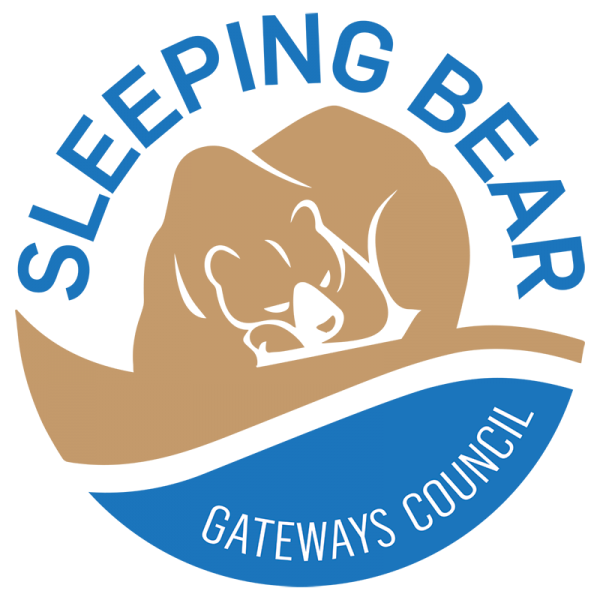Across Michigan, many rural counties and tourist communities are experiencing a dramatic increase in the price of homes and land. The Glen Lake Community Schools and businesses in Leelanau County, as well as other school districts in the state, struggle to bring talent to their respective enterprises and organizations due to the high cost of housing.
But a little-known act, the Municipal Forest Act, that allows the Michigan Department of Natural Resources to convey tax-reverted land to school districts could offer a solution. If this act was amended, the Glen Lake School District could repurpose land assets to significantly reduce the total costs of housing units necessary to change the dynamics currently in place.
Housing Costs Price Out Working-Class
The demand for property and homes, particularly from potential vacation homeowners and retirees, has significantly impacted the value and affordability of land and existing homes in vacation destinations.
Without a solution that sponsors development of attainable workforce housing, the character of many northern Michigan communities will experience significant changes, including the inability to house families in these communities.
As an example, attainable housing unit levels and availability in Leelanau County are currently inadequate, creating a barrier to young families and essential workers seeking to live in their respective communities. This includes teachers, healthcare professionals, entrepreneurs, and hospitality workers.
Increasing the inventory of attainable homes requires developers to seek the lowest costs achievable in bringing a residence to the market. Cost of the underlying land, a significant initial investment, can derail projects that seek to serve essential workers.
Municipal Forest Act Offers Solution
In 1931, the Michigan Legislature passed the Municipal Forest Act (Community Forest Act) authorizing the Department of Conservation, now the DNR, to convey tax-reverted land to school districts and other units of government to establish community forests.
The express purpose of the land was to be used solely for school forest purposes, demonstrating proper forest management and was later amended to include public recreation as an approved use.
Over the next 30+ years, the State transferred to municipalities and school districts over 82,000 acres of land (See Appendix A). Many have been underutilized for the express purpose of forest schools.
Since the initiation of this property transfer program over 90 years ago, the relevant issues in Michigan have shifted significantly. First, most forest owners have embraced forest certification and sustained yield harvesting.
Most commercial forestland is now owned by institutional investors, primarily public pension funds including MERS of Michigan. This change in ownership and pressure on forest products companies has led to an improved model of forest management.
Forest Properties Could Be Used for Housing Projects
Second, the emerging and growing issue of home affordability is a much higher concern today than 90 years ago. Land is an expensive and finite resource, and rural communities are tasked with addressing housing needs for both seasonal and year-round workers.
With limited opportunities for nonprofits to acquire land for attainable housing, these forest school properties could provide a platform around which nonprofit housing development could occur, providing much-needed relief to families and essential workers in our rural Michigan communities.
There is a unique opportunity to repurpose some of the forest school properties, based on greatest need, for attainable workforce housing. This requires a policy change in the Michigan legislature. Attached as Appendix B is a draft of legislative language that would affect the policy change being sought.
This effort is supported by Senator John Damoose and Representative Betsy Coffia. The DNR has responded to the proposed change, stating that a process currently exists for owners of forest school properties to repurpose these tracts if necessary.
From the Glen Lake Schools’ perspective, the size and stocking of trees on the parcel do not allow the school district to repurpose without returning the property to the DNR and then purchasing the property for appraised value. This process would derail any attempt to develop attainable housing for essential workers.
Glen Lake Parcel Would Benefit From Change
The Glen Lake School District received a 180-acre parcel in Empire Township. This was originally deeded to the Empire Rural Agricultural School by the State of Michigan in 1941 and subsequently consolidated under the Glen Lake Community Schools District’s assets.
If not used for the expressed purposes of forestry or recreation, the DNR would determine if the land is prime land (Act 451 of 1994 324.52706 (1)) with the definition of “prime land” being one or more of the following:
- a) Is within a boundary of a program administered by the department
- b) Provides access to a public body of water, or
- c) Is not less than 121 acres in size and, at any time during the preceding 10 years, had a basal area factor of not less than 90 square feet per acre
The 180+ acre tract owned by the school district would be classified as “prime land,” as it is greater than 121 acres in size and has an estimated basal area of at least 90 square feet per acre. This would require the school district to transfer the property back to the DNR if not used for forest school and/or recreational purposes and would not be available to the school district and community to develop attainable housing.
Today, the value of this 180+ acre tract is significant. If the market cost of the land were included in a non-profit housing development strategy, the resulting housing units would not meet the attainable housing needs of the local communities and school district.
Creation of Land Trust Could Address Housing
The Glen Lake School District is investigating the opportunity to use this land as a scalable solution to the attainable housing needs in the school district and Glen Lake communities.
The intent is to create a nonprofit community land trust that would administer the use of the land for attainable workforce housing, both seasonal and permanent. To succeed in this endeavor would require the support of the Michigan House and Senate in modifying the current legislation in Act 451 of 1994.
The initial step is to allow the property to be retained by the school district for attainable housing regardless of its size. The second step would be to relinquish the reversionary interest currently in place, which is allowed for non-prime properties (Act 451 of 1994 324.52706 (2)) and to specifically allow nonprofit housing strategies as a use approved by the department (Act 451 of 1994 324.52706 (3)).
The final step would be to modify the definition of a public agency (Act 451 of 1994 324.52706 (10)(d)) allowing the school district to assign its interest in the property to a nonprofit entity, such as a community land trust, formed to accomplish the housing initiative.
In summary, these forest school properties could provide a turning point for school districts and communities to make progress against the headwinds of a lack of attainable housing in many areas of the state. Please consider supporting this initiative to repurpose forest school properties.



